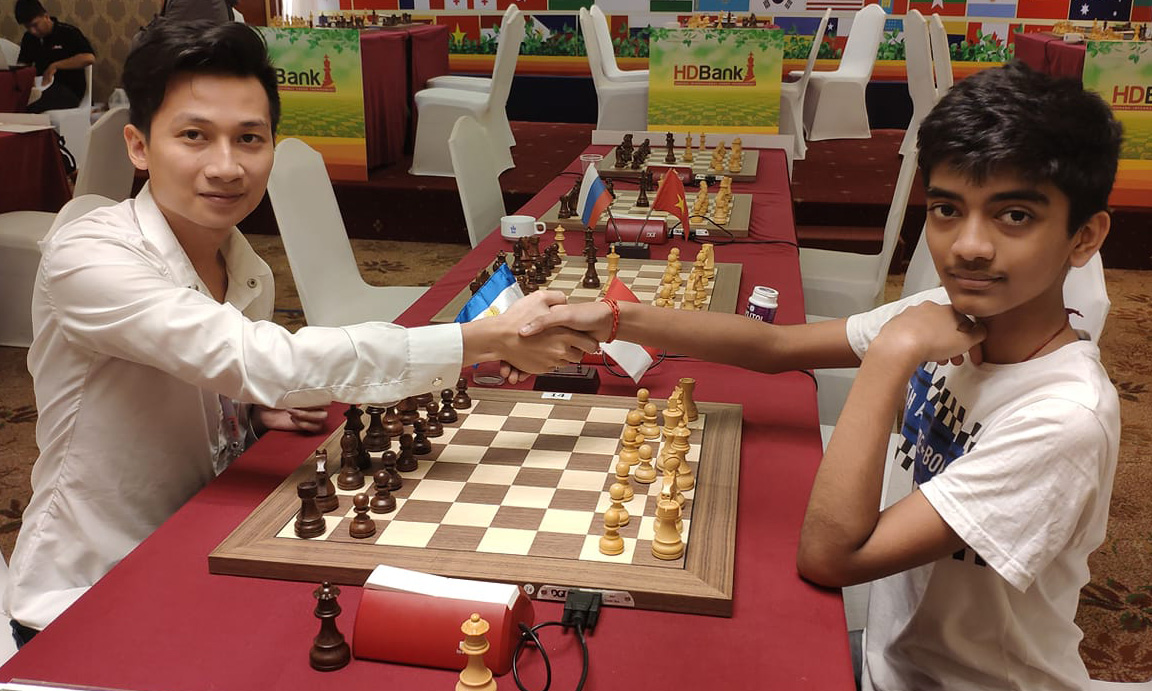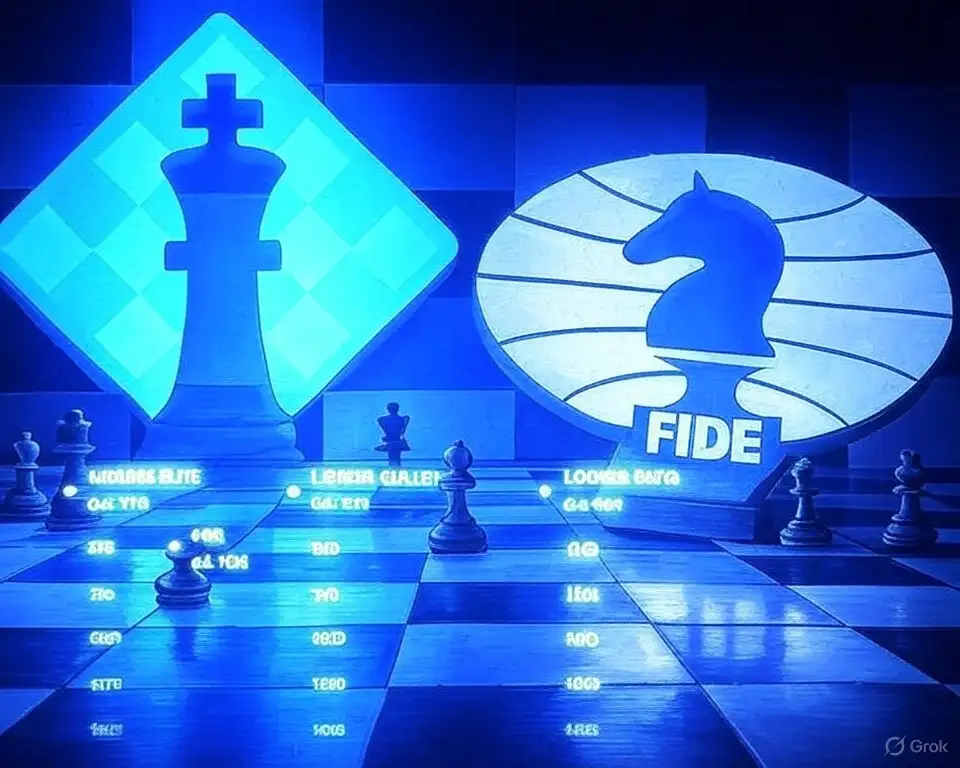If you play over-the-board chess, you’ve probably seen at least two different rating numbers next to players’ names: a FIDE rating and a USCF rating. They both try to measure the same thing—how strong a player is—but they come from different organizations, use different math and rules, and can give different numbers for the same player. This article explains the main differences in plain American English so you know what each number means and how to use them.
Who runs them and why they exist
FIDE (Fédération Internationale des Échecs) is the international chess federation. FIDE ratings are used for international tournaments, world championships, and FIDE titles (GM, IM, FM, etc.). The USCF (United States Chess Federation) is the national federation for the United States. USCF ratings are used for most US domestic events, US national titles, and US tournament pairings. Because they serve different pools of players and different administrative needs, their systems have evolved differently.
Both systems are “Elo-like” but not identical
Both systems are based on the Elo idea: your rating goes up if you do better than expected against the ratings of your opponents, and down if you do worse. But the two organizations apply that idea with different formulas, development coefficients (K-factors), provisional rules, and special adjustments. Those implementation differences are why a player’s USCF number is usually different from their FIDE number.
Key technical differences (simple bullets)
- K-factor / development coefficients. FIDE uses set K-values that depend on how established a player is and their rating level (for example, K = 40 for a player new to the list until they complete at least 30 games; K = 20 for players under 2400; K = 10 once a player reaches 2400). That makes FIDE changes relatively conservative for established strong players and faster for brand-new entries.
- USCF calculation steps and effective games. The USCF system uses a more elaborate multi-step calculation (temporary initial ratings for unrated players, an “effective” number of games, intermediate calculations, then final ratings). USCF also treats provisional players differently until they’ve played enough games to be “established.”
- Bonuses and adjustments. USCF historically awards “bonus” points for exceptional tournament performances and has special adjustments for different time controls and event types. The bonus thresholds and formulas have been changed over time (for example, a recent official change lowered the US Chess bonus threshold), which affects how much extra rating a breakout performance can create.
Typical numerical differences (what to expect)
A practical rule of thumb used by many players and organizers is that USCF ratings are usually 50–100 points higher than FIDE ratings for typical club-level players. That gap isn’t fixed: it varies with rating level, age group, and who you play. For some players (especially unusual cases or those who play mostly domestic or mostly international events), the two numbers can be much closer or even swapped. In short: expect USCF ≈ FIDE + 50–100 points as a rough average, but treat that as only a guideline.
Why the gap? A few reasons:
- Different pools. USCF measures you against mostly American over-the-board players; FIDE pools are broader and global.
- Different math. USCF’s bonus system, provisional rules, and effective-games weighting create slightly different incentives and numeric outcomes than FIDE’s stricter K-structure.
- Different activity patterns. Players who play many US events but few FIDE-rated events will tend to have more “USCF history” shaping their number.
Converting between systems
There is no single “official” conversion. Researchers and community statisticians have produced approximations (linear formulas or look-up tables) that work reasonably well for different rating ranges. For example, one commonly referenced approximation shows different conversion formulas below and above certain rating thresholds; other academic approximations model the average USCF–FIDE gap across the rating scale. These formulas are useful for pairing or rough comparisons, but they are only estimates—use them carefully.
Practical implications for players
- Which rating matters for what? If you want FIDE titles or to enter international events, FIDE rating is what counts. If you’re playing in US tournaments, USCF rating will be used for pairings and US national titles.
- New players. If you are unrated, both systems give you a provisional estimate, but the USCF provisional process is a well-defined multi-step one that settles after a number of games. Expect your provisional rating to swing more at the start.
- Tracking progress. Don’t obsess over the absolute number. Use either rating to track progress over time within the same system. If you move between systems often, look at trends (up or down) rather than one-number comparisons.
- Tournament strategy. USCF’s bonus rules mean that long, strong events can reward you more than short rapid events. FIDE’s K-structure means rapid gains for new entrants but slow changes for established high-rated players.
Estimated FIDE vs USCF Rating Comparison
| USCF Rating | Estimated FIDE Rating |
|---|---|
| 1000 | Unrated (below 1400) |
| 1100 | Unrated (below 1400) |
| 1150 | Unrated (below 1400) |
| 1200 | Unrated (below 1400) |
| 1250 | Unrated (below 1400) |
| 1300 | Unrated (below 1400) |
| 1350 | Unrated (below 1400) |
| 1400 | 1400 |
| 1450 | 1435 |
| 1500 | 1480 |
| 1550 | 1530 |
| 1600 | 1575 |
| 1650 | 1615 |
| 1700 | 1665 |
| 1750 | 1715 |
| 1800 | 1780 |
| 1850 | 1825 |
| 1900 | 1880 |
| 1950 | 1930 |
| 2000 | 2035 |
| 2100 | 2155 |
| 2200 | 2255 |
| 2300 | 2355 |
| 2400 | 2465 |
| 2500 | 2570 |
| 2600 | 2670 |
| 2700 | 2785 |
| 2800 | 2875 |
| 2900 | 2985 |
Quick interpretation
- At club level (USCF 1000–1800), FIDE ratings are typically 80–120 points lower.
- Around 2000–2200, the difference narrows to about 50–100 points.
- At master level (2200+), the two systems become almost equal, sometimes even reversing slightly depending on activity.
A few myths debunked
- “FIDE is always more accurate.” Not necessarily. FIDE is internationally standardized and conservative in some ways, but accuracy depends on how much you play rated events in that system.
- “You should switch systems when reaching X rating.” There’s no magic threshold. If you plan to play internationally, get a FIDE rating. Otherwise, keep focusing on events that matter to your goals.
Quick summary
- FIDE and USCF both measure chess strength using Elo-style math, but they implement the math differently.
- USCF numbers are usually ~50–100 points higher than FIDE for many club-level players, but this gap varies by rating and activity.
- Conversions exist, but they are approximations—use them only for rough comparisons.
- Which rating “matters” depends on your goals: FIDE for international titles/events, USCF for US domestic play.
FAQs about FIDE and USCF ratings
1. Why is my USCF rating higher than my FIDE rating?
That’s normal. USCF ratings are usually about 50–100 points higher on average. The difference comes from how each system calculates performance and which player pool you compete in.
2. Can I have a FIDE rating without a USCF rating?
Yes. If you play in FIDE-rated events only, you can have a FIDE rating and no USCF rating at all. Likewise, many American players only have a USCF rating because they’ve never played an internationally rated event.
3. Which rating do tournament organizers use?
In the United States, USCF tournaments use your USCF rating for pairings and sections. International events use FIDE ratings. Some major tournaments, like the U.S. Championship, consider both.
4. How do I get a FIDE rating?
You need to play in a FIDE-rated tournament. Most big events in the U.S. have FIDE sections. Once you’ve played enough games (usually at least five against rated opponents), you’ll appear on the official FIDE rating list.
5. Can my FIDE and USCF ratings be exactly the same?
It’s possible, but rare. Because the two systems update differently, even players with the same strength will see slightly different numbers in each system.
6. Which rating do colleges or sponsors care about?
It depends. U.S. universities often look at USCF ratings since they reflect domestic competition. International recruiters or chess organizations usually refer to your FIDE rating.
7. How often are ratings updated?
FIDE updates monthly, usually around the first of each month. USCF updates right after each rated event, so your number can change within days.
8. Are online chess ratings the same as FIDE or USCF?
No. Ratings on platforms like Chess.com or Lichess are completely separate. Online ratings tend to be inflated and aren’t official for tournament play.
Sources (named as you requested)
- FIDE Handbook / FIDE Rating Regulations.
- US Chess (USCF) Rating System specification.
- ChessKlub (overview article on rating differences).
- Mark Glickman (approximating formulas / research on rating comparisons).
- US Chess (news release about USCF bonus-threshold changes).

I’m Xuan Binh, the founder of Attacking Chess, and the Deputy Head of Communications at the Vietnam Chess Federation (VCF). My chess.com and lichess rating is above 2300. Send me a challenge or message via Lichess. Follow me on Twitter (X) or Facebook.

